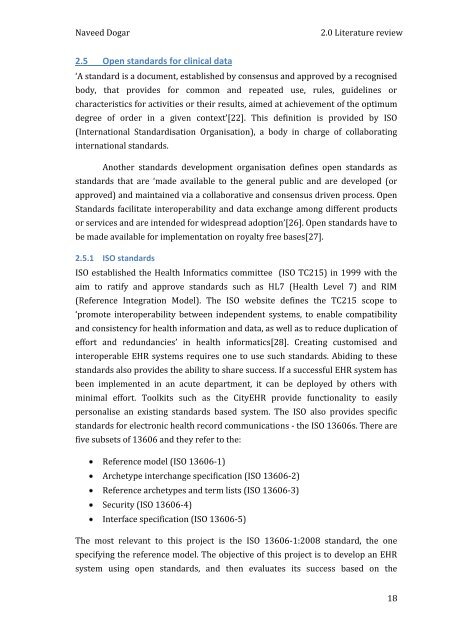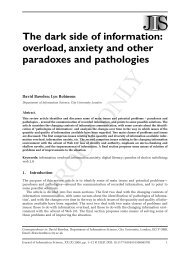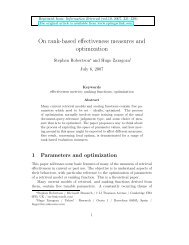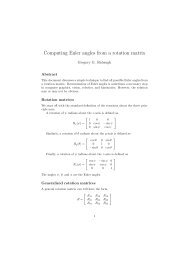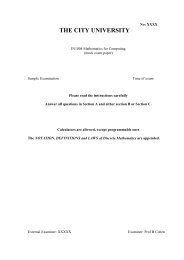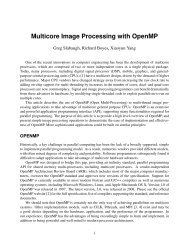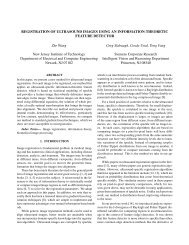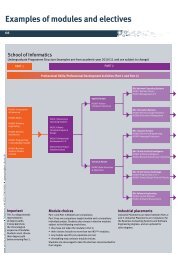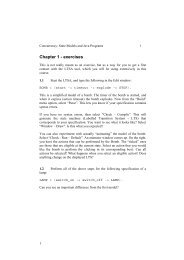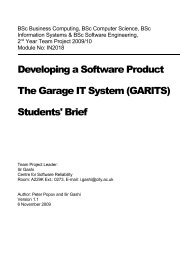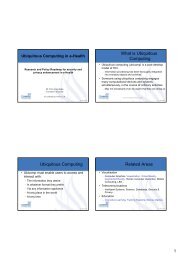Evaluation Of CityEHR Toolkit Through Development Of An Open ...
Evaluation Of CityEHR Toolkit Through Development Of An Open ...
Evaluation Of CityEHR Toolkit Through Development Of An Open ...
Create successful ePaper yourself
Turn your PDF publications into a flip-book with our unique Google optimized e-Paper software.
Naveed Dogar<br />
2.0 Literature review<br />
2.5 <strong>Open</strong> standards for clinical data<br />
‘A standard is a document, established by consensus and approved by a recognised<br />
body, that provides for common and repeated use, rules, guidelines or<br />
characteristics for activities or their results, aimed at achievement of the optimum<br />
degree of order in a given context’[22]. This definition is provided by ISO<br />
(International Standardisation Organisation), a body in charge of collaborating<br />
international standards.<br />
<strong>An</strong>other standards development organisation defines open standards as<br />
standards that are ‘made available to the general public and are developed (or<br />
approved) and maintained via a collaborative and consensus driven process. <strong>Open</strong><br />
Standards facilitate interoperability and data exchange among different products<br />
or services and are intended for widespread adoption’[26]. <strong>Open</strong> standards have to<br />
be made available for implementation on royalty free bases[27].<br />
2.5.1 ISO standards<br />
ISO established the Health Informatics committee (ISO TC215) in 1999 with the<br />
aim to ratify and approve standards such as HL7 (Health Level 7) and RIM<br />
(Reference Integration Model). The ISO website defines the TC215 scope to<br />
‘promote interoperability between independent systems, to enable compatibility<br />
and consistency for health information and data, as well as to reduce duplication of<br />
effort and redundancies’ in health informatics[28]. Creating customised and<br />
interoperable EHR systems requires one to use such standards. Abiding to these<br />
standards also provides the ability to share success. If a successful EHR system has<br />
been implemented in an acute department, it can be deployed by others with<br />
minimal effort. <strong>Toolkit</strong>s such as the <strong>CityEHR</strong> provide functionality to easily<br />
personalise an existing standards based system. The ISO also provides specific<br />
standards for electronic health record communications - the ISO 13606s. There are<br />
five subsets of 13606 and they refer to the:<br />
Reference model (ISO 13606-1)<br />
Archetype interchange specification (ISO 13606-2)<br />
Reference archetypes and term lists (ISO 13606-3)<br />
Security (ISO 13606-4)<br />
Interface specification (ISO 13606-5)<br />
The most relevant to this project is the ISO 13606-1:2008 standard, the one<br />
specifying the reference model. The objective of this project is to develop an EHR<br />
system using open standards, and then evaluates its success based on the<br />
18


